
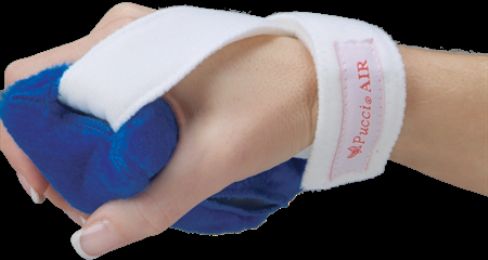
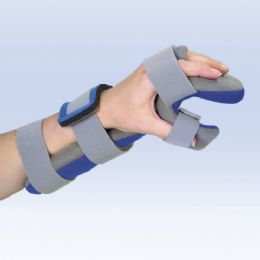
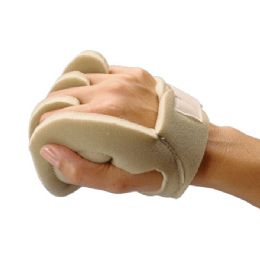
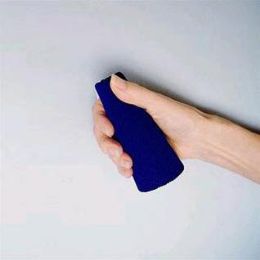
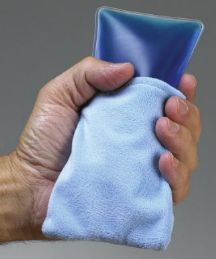

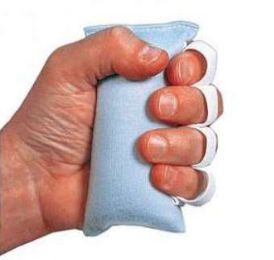
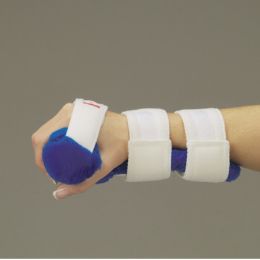
What is a Hand Contracture?
A hand contracture is a structural change in the muscle tissue which results in an inability to move the muscle and can lead to permanent contraction. Once a contracture happens, it cannot be reversed; therefore, the range of motion will be limited as a result. Contractures are associated with many medical issues which can range from genetic conditions to severe burns. There are several steps that can be taken to help reduce the risk of developing a contracture and to address it in the early phases before a muscle becomes ‘frozen’.
A condition known as hypertonic stress is one reason for a hand contracture. In a state of hypertonic stress, the muscles are sent constant signals to tighten and contract. Over time, the muscle tissue begins to change and it goes into a state of permanent contraction. A condition commonly connected with hypertonic stress is spastic cerebral palsy. There are also other conditions which are linked with spasticity that can also lead to contractures.
A scar is another cause of a hand contracture. Burn victims in particular are at risk of developing a contracture because the burns thicken tissues which make it difficult to move the muscles underlying the scar. Also, those who have had multiple open surgeries may sometimes develop contractures at the surgical sites, and prolonged immobility can have a similar result on the muscle tissue. Capsular contracture is a condition in which the body reacts to a foreign object in the body, such as an implant, by tightening the muscles around it. This can displace the implant or make it difficult for the individual to move.
Signs that a hand contracture may be developing can include pain with normal range of motion, stiffness in a muscle, and difficulty moving a muscle. Treatment can include gentle stretching exercises to help the muscle to relax and elongate. Even if these exercises are painful, they must be repeated regularly. Hand splints, or orthoses, can also help keep the fingers, hand and wrist in a proper position to prevent an irreversible contracture, or to help position the hand after a contracture has already developed. These can include palm protectors, finger cushions with or without finger separators, ulnar deviation splints, dorsal blocking splints, and finger separator mitts.
What is a Hand Splint?
A hand splint is a plastic or metal device designed to securely hold the fingers, hand and/or wrist in a position to help facilitate the healing process. A hand splint may be used when some type of medical condition threatens to impair the function of the hand, or in the event of an injury. There are many types of hand splints which can be used, depending on different kinds of health issues or conditions of the hand.
Sometimes referred to as a hand orthosis, a hand splint is often utilized as a way of helping to prevent further damage to the hand while it is healing. At the same time, the particular design of the splint may also help keep the fingers straight or separated, or provide support to the thumb so the hand can still be used during the healing process. Depending on the specific severity of the health problem or injury of the hand, a variety of factors should be considered when choosing the proper type of splint.
One of the more common types of splints is known as the resting hand splint, which basically helps to keep the hand in an open position. A hand brace of this type helps to keep the fingers extended and open along with keeping the palm flat. A resting hand splint also helps prevent the thumb from curling into the palm of the hand. This type of brace can be particularly important if the presence of a debilitating disease causes the thumb and fingers to pull into a closed fist. By wearing a resting hand splint, the muscles of the hand are stretched to make it harder for the thumb and fingers to become cramped or stiff.
A weight bearing splint is also helpful when the muscles of the hand are stiff. This type of hand splint can be beneficial when the hand has some weakness and is not capable of supporting much weight. Similar to the resting hand splint, a weight bearing splint helps to keep the hand in an open position to avoid cramps and similar discomfort. Some designs make it possible to add support up to the elbow of the arm. This may be appropriate if the intent is to develop the elbow and shoulder muscles to help compensate for the weakened hand.
A thumb spica splint is another type of an effective hand and wrist splint. With a hand splint of this type, the goal is to keep the thumb from curling into the palm, but to also allow enough mobility for the thumb and fingers to pick up objects and perform a limited range of tasks.
Depending on the type of hand splint needed, it may be made with different materials. When total immobility is desired, a metal hand splint is often a good option. To allow slightly more range of motion with the hand, a plastic hand splint may be a good choice. Some splints may be formulated using a durable neoprene material which keeps the hand flat but does allow for some movement of the thumb and fingers, such as the thumb spica splint. Other hand splints are made from softer materials, such as finger contracture cushions, palm cones, and finger separator mitts. Additionally, the correct size of a hand splint should be chosen so that the condition does not worsen, circulation is not compromised, and to provide enough support and immobilization to the entire hand.
Rehabmart is proud to carry a variety of innovative and superior quality hand splints for hand contractures from experienced and credentialed vendors, which include DeRoyal, North Coast, Restorative Care of America, Comfy Splints, McKesson Medical-Surgical, Skil-Care, Posey, and Sammons Preston.
Hulet Smith, OT
Rehabmart Co-Founder & CEO
lb